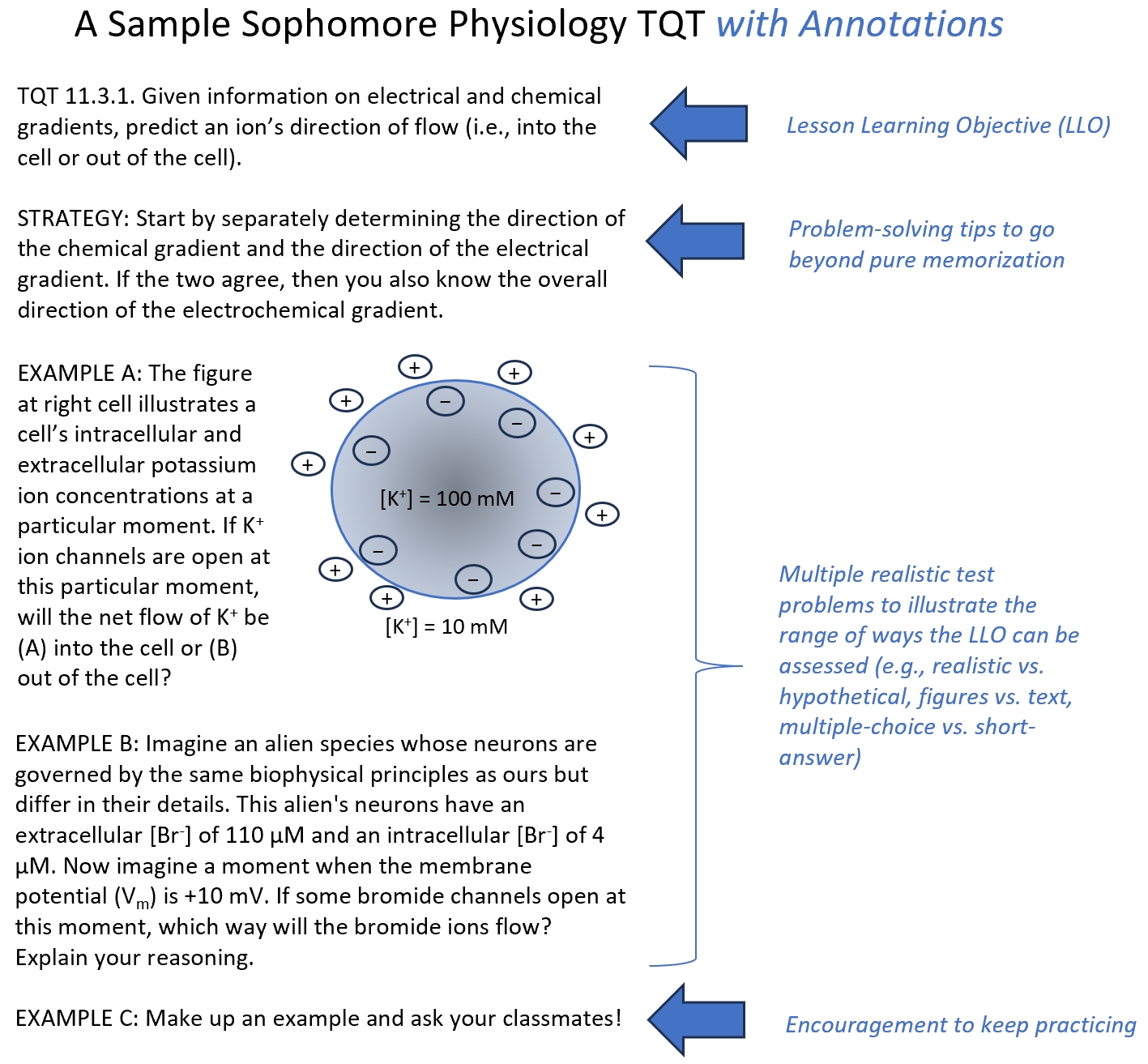Summative AssessmentFor many years, I (Greg) struggled with a common teaching dilemma: how can I help my undergraduate students develop transferrable knowledge and skills in courses dominated by high-stakes tests that traditionally reward memorization above all else?
In 2019, I and my mentor Lekelia (Kiki) Jenkins (Arizona State University) were grappling with the issue of alignment between active-learning exercises and summative assessments. Would students engage in activities that did not directly relate to problems they would face on subsequent exams? Working together via Sue Wick's PALM Network, Kiki and I were adding more active learning to my Human Anatomy & Physiology courses, but we were stymied by the alignment issue, for which the field of science education seemed to lack scalable solutions. As we pondered this dilemma, I came across an essay by Ben Wiggins (then at the University of Washington, now at Shoreline Community College) on his Public Exam system. Public Exams' matching of ambitious learning goals with actual exam questions -- consistent with the general principle of backward design (McTighe & Thomas 2003) -- appealed strongly to me and Kiki, who, with help from Ben, then adapted some aspects of this approach to formulate a related but distinct assessment framework that we dubbed Test Question Templates, or TQTs for short. Early TQT dissemination efforts led two additional faculty -- Usha Sankar (then at Fordham University, now at Drexel University) and Marcus Lawrence (Southern Utah University) -- to seek my mentorship via the PALM Network, as I had previously done with Kiki. These new pairings have led to further explorations of TQTs and further interest from other members of the science education community. This TQT origin story shows that the development of the TQT framework is not attributable to a single individual, but instead reflects the input of a community of science educators spanning a range of roles at a range of institutions. In this spirit, Ben and I are now collaborating on an NSF-funded project on Exam Previews, a general strategy that encompasses both Public Exams and TQTs!
A Test Question Template is a student-facing resource that explicitly connects a Lesson Learning Objective (LLO) with multiple specific examples of how that LLO might be assessed on a test. TQTs thus show students what they will need to do on tests, and how to practice, without revealing all details of the tests. From the instructor side, TQTs' pre-specification of test question formats makes test-writing more straightforward; by varying certain details within a consistent broader structure, we can generate additional new questions with relative ease. One example of a TQT is shown below. Hundreds of additional examples are available in a Google Drive folder. 
Beyond making tests less stressful and more rewarding for students and instructors, TQTs should generally promote students' transfer of knowledge to new contexts by encouraging practice on multiple examples with different surface features (Kaminske et al. 2020). Since the TQT framework emphasizes (A) cognition above and beyond straight memorization, (B) transparent alignment of practice and testing, and (C) abundant opportunities for creative and collaborative student practice, it may be considered a cousin of approaches such as specs grading, Mary-Ann Winkelmes' TILT, and Deb Donovan's Learning Targets and Success Criteria.
Members of the "TQTeam" have been working on many TQT-related projects, as summarized below.
Starting in October 2024, the work of Ben Wiggins (PI) and me (Co-PI) on Public Exams and TQTs will be funded by the National Science Foundation! Our $500K proposal was titled Pre-Released Exam Strategy Assessment Research. We of the TQTeam have also been grateful for past seed money from ADInstruments (HAPS workshop sponsor, 2021), the American Physiological Society (Teaching Career Enhancement Award, 2021-2022), the Everett Community College Foundation (2021-2022), Sue Wick's PALM Network (2018-2022), and Jeff Morris's ROSE Network (2021-2022).
|
